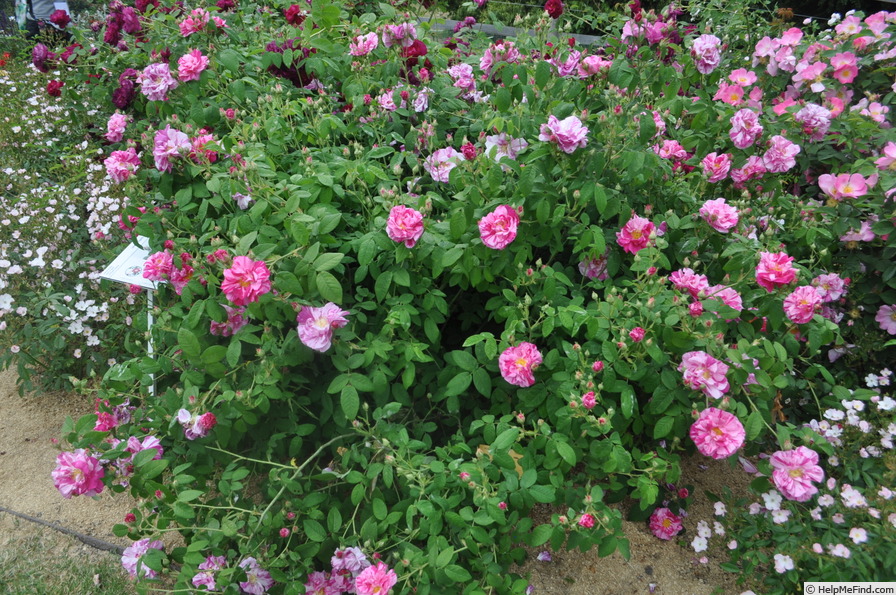|
|
'Provins Oeillet' rose Description

Photo courtesy of jedmar
HMF Ratings:
167 favorite votes.
Average rating:
EXCELLENT-.
Origin:
Introduced by Unknown in before 1581 as ' Rosa gallica var. variegata hort. ex Andrews synonym'. Introduced in Australia by Camden Park in 1845 as 'R. gallica variegata'.
Class:
Gallica / Provins, Species / Wild.
Bloom:
Pink blend, stripes. Strong fragrance. Large, semi-double (9-16 petals) bloom form. Once-blooming spring or summer.
Habit:
Bushy, suckers on its own roots, well-branched. Matte, medium green, attractive fall color foliage. 5 leaflets.
Height: 30" to 4' (75 to 120cm). Width: 3' to 4' (90 to 120cm).
Growing:
USDA zone 4b through 8b. Can be used for garden or hedge. Very hardy. shade tolerant. Disease susceptibility: disease resistant. Remove old canes and dead or diseased wood.. Prune after flowering is finished.
Patents:
Patent status unknown (to HelpMeFind).
Notes:
DNA analysis has shown that 'Versicolor' is closely related to 'Impératrice Joséphine', and and only further to 'Officinalis'. - see References.
Named after Rosamond Clifford, mistress of Henry II. The oldest and best known of the striped roses.
In Roses for English Gardens, Gertrude Jekyll refers to a Damask called 'Rosa Mundi' and says that it is also known by the name of 'Cottage Maid' and 'York and Lancaster'. Further, she says that 'York and Lancaster is also claimed for another striped rose of much less value.
The Swedish Rose Society recommends Rosa Mundi for northern Sweden.
Sets hips.
|